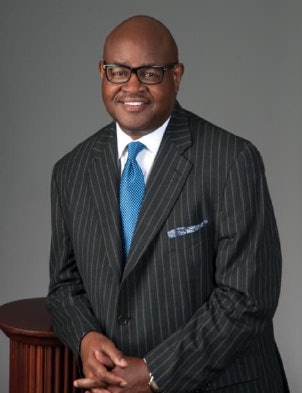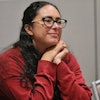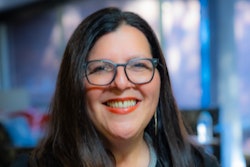After an unusually quiet August in the middle of hurricane season, two named storms swept across the U.S. in September. From Puerto Rico to Florida, colleges and universities had to pivot and prepare as Hurricanes Fiona and Ian barreled toward them over tropical waters.
The University of Puerto Rico’s (UPR) west coast campuses flooded on September 18 when Fiona’s eye passed over Punta Tocon. Power outages left more than one million in the dark and continue to plague the island, but university officials said the impact is nowhere near Hurricane Maria in 2017, which caused roughly 3,000 casualties and almost $90 billion in damage. UPR students were able to return to their campuses last week.
Just ten days after Fiona, powerful Hurricane Ian ripped across Florida, decimating both its coastlines in a slow crawl. At least 117 people lost their lives in the storm, and damage estimates start at $53 billion.
 Dr. Lawrence Drake II, interim president of Bethune-Cookman University in Daytona Beach, Florida.
Dr. Lawrence Drake II, interim president of Bethune-Cookman University in Daytona Beach, Florida.
These universities serve student bodies that are majority minoritized populations. While university officials praised weather prediction models that allowed their students, faculty and staff ample time to prepare, they are worried about the increasingly violent and less predictable nature of hurricanes as climate change continues to impact the globe.
“Our student profile is one where they’re not financially wealthy, they’re not generally able to pivot very quickly in the face of dealing with something as adverse as this weather pattern,” said Drake. “We needed to give them time to get home.”
B-CU students were ordered to evacuate four days before the storm hit. By Tuesday afternoon, the campus was locked down. While the storm raged, the campus lost power and internet, and many faculty and staff homes were flooded. About 65% of B-CU’s student body comes from Florida. In Daytona Beach and cities along Ian’s path, students, faculty and staff watched neighbors’ homes sink beneath the water. Drake said it was “traumatic.”
“Even if you don’t witness it directly—the level of empathy we have for our communities across Florida—even if we didn’t suffer, we know many that did,” said Drake. He is increasing mental health supports for students, faculty, and staff who need them.
Overall, Drake said his campus was lucky. Although high winds caused damage to some buildings and flood waters raised concern about older foundations, the majority of campus made it through the storm. B-CU was able to reach out and support its surrounding communities. Students, faculty and staff have volunteered to help bring food to those in need at surrounding shelters.
Because the loss of power and internet was not statewide, and BC-U students and faculty had gone home, learning went asynchronous. Classes continued despite Ian, with some students utilizing hot spots to access wifi. On the island of Puerto Rico, however, power outages kept UPR Mayagüez’s campus shut down for two weeks.
 Dr. Agustín Rullán, chancellor of the University of Puerto Rico, Mayagüez.
Dr. Agustín Rullán, chancellor of the University of Puerto Rico, Mayagüez.
Roughly a one-hour drive north from Mayagüez, UPR Aguadilla facilities experienced $400,000 in damage from flooding and debris. UPR Aguadilla Chancellor Dr. Sonia Rivera González said the campus’s biggest problem after Fiona was the lack of power and potable water.
“The process of keeping the physical facilities up to date has been complicated,” said Rivera González. “We need a more proactive response from state and federal agencies, taking into account that Puerto Rico is an area prone to this type of atmospheric event."
While waiting for the power to return, Rullán made sure his campus was open for students who needed access to washing machines or power outlets. He expanded the wireless signal, ensuring it reached campus parking lots so students, faculty and staff could access a steady connection from their cars.
“The utility companies here are the weakest link here,” said Rullán. “I’m hoping that, if we have another hurricane this season, it won’t be as bad, but you never know. The system is very fragile, it’s old and obsolete, it needs major investment.”
Hurricane season officially comes to an end on November 30.
Liann Herder can be reached at [email protected].
















